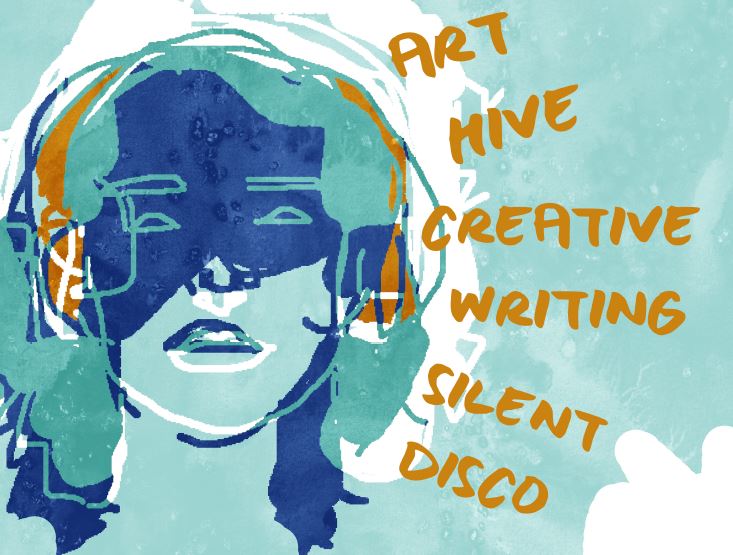A creative arts workshop day will be held as part of Mental Illness Awareness Week
Connectedness, hope, identity, meaning and empowerment make up the acronym Chime In, which is a recently created student services group. “Our mandate is to help students better understand what the services are [at Concordia], how to access them and let them know what they do have access to,” said Alia Nurmohamed, a student representative at Chime In. “We are here for you. If you need something, there is always a willing hand to help.”
According to Nurmohamed, it can be very daunting to ask someone for help when starting at a new school. The vast service networks at universities can be confusing, particularly for students fresh out of CEGEP or high school. “It’s not that the [services] are hard to access, but sometimes it’s hard to navigate and the information isn’t always easy to find,” Nurmohamed said. “So having some place or some people who are always there to better direct students is a good goal to have.”
The group began in May 2017 and consists of students representatives Nurmohamed and Jade Se; Howard Magonet, the director of Concordia’s Counselling and Psychological Services; Jillian Ritchie, an outreach coordinator from AMI Quebec; and Alexis Lahorra, a student representative and youth mental health advocate for the mental health awareness student group Jack.org.
Chime In will be hosting a day of creative arts workshops on Oct. 5 from 10 a.m. to 3 p.m. in the Library Building auditorium as part of Mental Illness Awareness Week. “To have a day of creative arts workshops speaks to everyone,” Nurmohamed said. “I personally believe that we all have our natural talents. Some of us naturally love music, reading—we all have these aspects in our lives that we turn to fulfill us, to sustain us.”
The various groups from Campus Wellness and Support Services will be present at the workshops, including Counselling and Psychological Services, Jack.org, AMI Quebec and Multi-Faith and Spirituality Centre. “There will be a Chime In member to help direct and talk to people—all of us are going to be there for this one purpose to raise awareness for mental health and well-being,” she said.
The event will feature five different workshops, one of which will be given by La Ruche, a community art studio created by Concordia’s creative arts therapy department. A large amount of art supplies for painting, drawing and sculpting will be made available to workshop participants. There will also be a creative writing workshop allowing participants to create their own graphic novel. “When you are writing for your well-being, it can be so deeply introspective, reflective and very personal—I think art and writing intersects in so many beautiful ways,” Nurmohamed said.
CJLO has prepared a silent disco as part of the music workshop where people can tune in to the radio with their smartphones, pop in their headphones and groove however they feel like in the moment. For those who enjoy physical relaxation, there will be a session of chair yoga. If you’re a fan of Concordia’s pet therapy program that takes place during midterm and finals, there will be a workshop offering some relaxing play time with a number of dogs. Cupcakes will also be provided at the event.
In addition to the workshops, there will be a banner where people can leave their own message of what well-being means for them. The banner will then be placed in common areas around campus. “Other students will be able to see what well-being means to their peers and just how much it touches every one of us all the time,” Nurmohamed said.
According to Nurmohamed, when people think of services at Concordia, they often think of health services in terms of physical bodily functions. “There is much more to that. Your well-being is every aspect of you—it is physical, mental, emotional and spiritual,” she said.
In order to fill in the gaps in the university’s services, Chime In student representative Jade Se is leading a new initiative called the Concordia Student Nightline. This active listening service will add to the similar services by other groups at Concordia. This student nightline will be available as a hotline for students to call and obtain well-being services at night and on the weekends.
Nurmohamed said students can access active listening services during the day from Counselling and Psychological Services and peer support at the Centre for Gender Advocacy and the Multi-Faith and Spirituality Centre. “But what happens at night? Or over the weekend?” she asked. Jack.org is among the other campus groups looking to better the well-being of students. The group often hosts social events like poetry slams, open mic nights and parties.
The university’s Counselling and Psychological Services also offer students access to eight sessions with a registered therapist. According to Nurmohamed, you can go through a 15-minute psychological triage, where you can talk to a professional and get some help, support, tools and resources.
“That’s what I like about Concordia—they never forget their students,” Nurmohamed said. “I’ve never met a group of administrators who are so willing to help all the time. Everyone that I have talked to about doing this, about the organization of this event, every group on campus is so for it. They just want to help. It’s a great way to remind people that we are here for you.”
All workshops are free and will take place on Thursday Oct. 5 from 10 a.m. until 3 p.m. in Concordia University’s Library Building auditorium.
Graphic courtesy of Alia Nurmohamed
